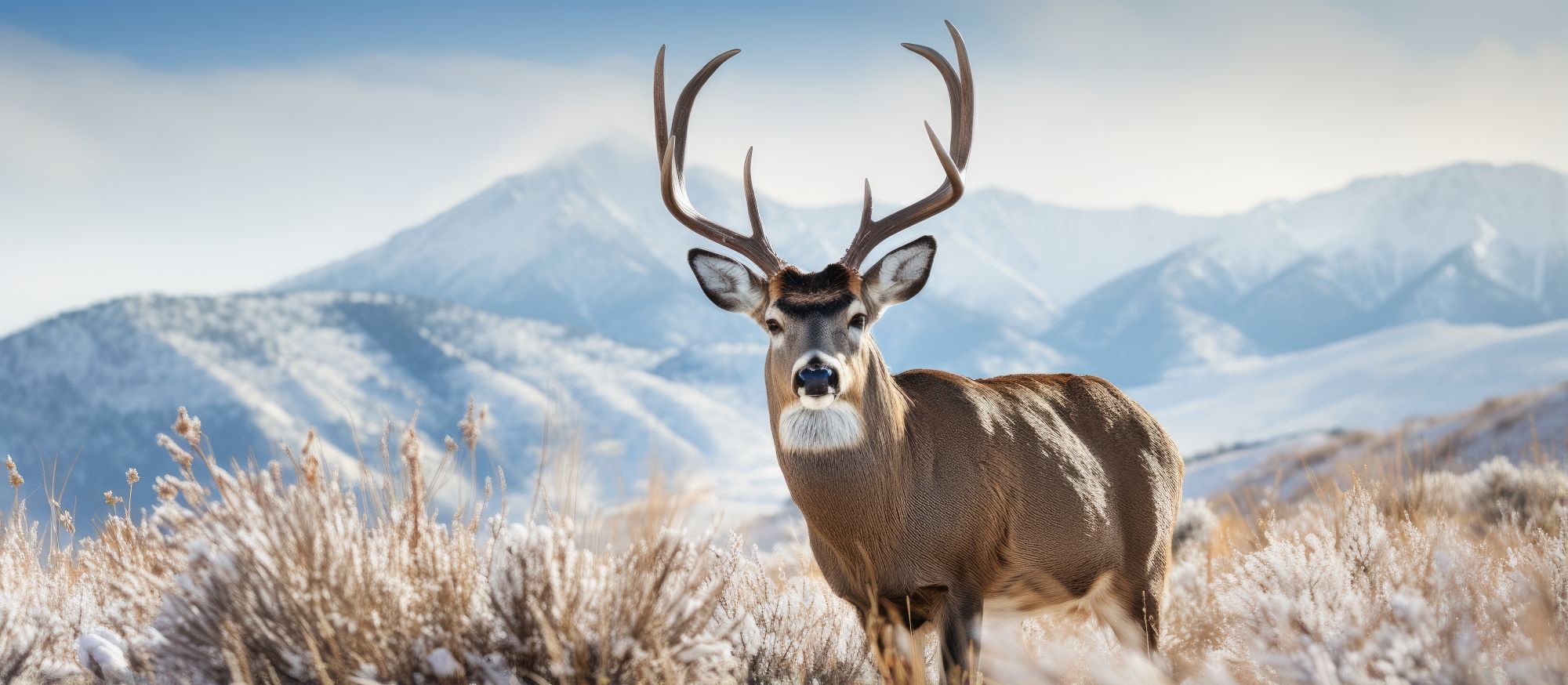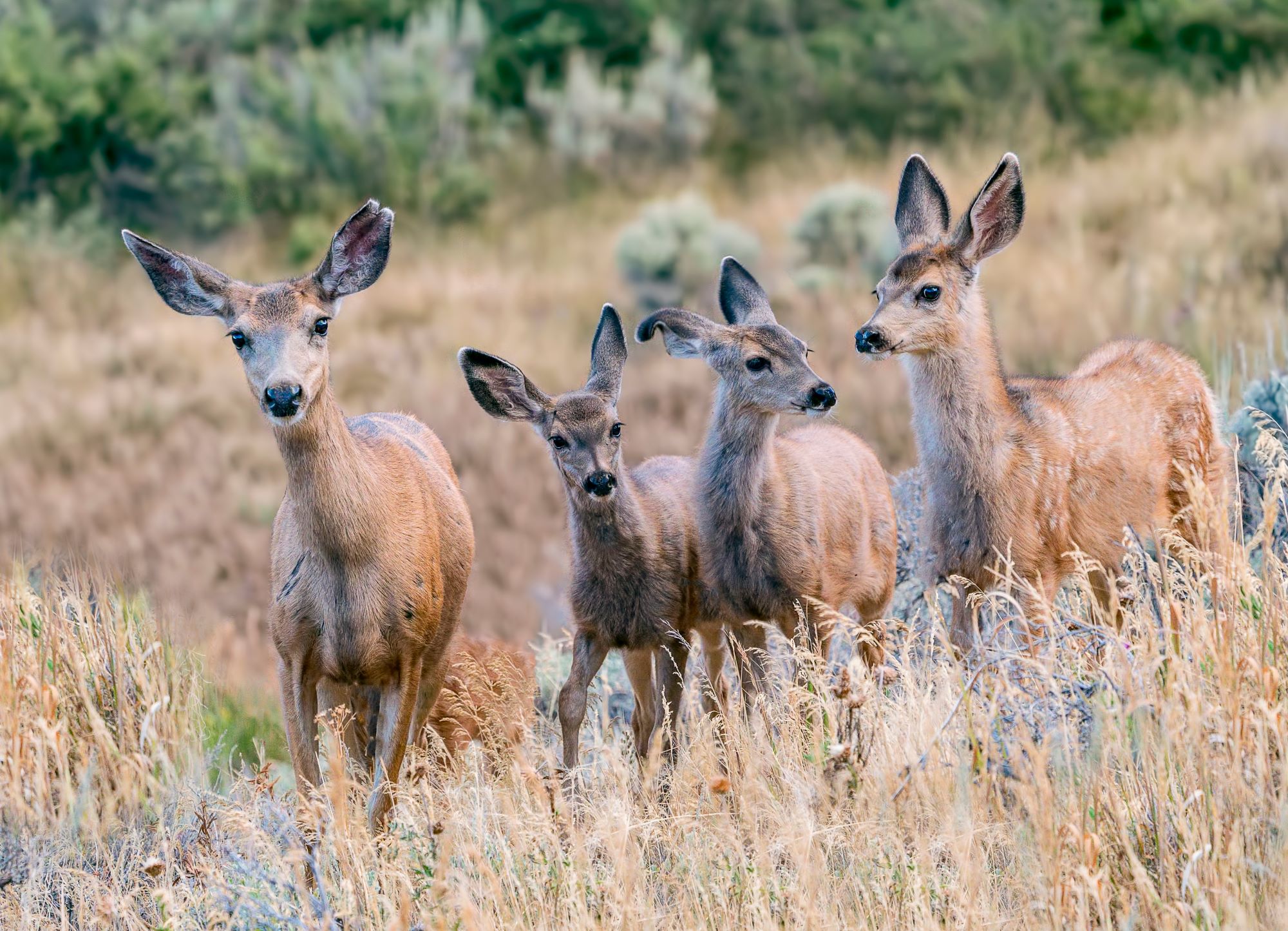
Mule Deer in Utah
Mule deer in Utah are a prominent and cherished species, integral to the state's wildlife and ecosystems. Named for their large, mule-like ears, which can move independently to detect sounds, mule deer are a common sight across various Utah landscapes, from the lowland deserts to the high mountain forests. These deer are an essential part of the natural food chain, serving as prey for large predators like mountain lions and coyotes, and playing a significant role in the state's biodiversity.
In terms of appearance, mule deer have a reddish-brown coat in the summer which transitions to a grayish-brown in the winter. They are characterized by their white rump patch and a small white tail with a black tip. Adult males, known as bucks, grow antlers annually, which are shed in the winter after the breeding season. These antlers are larger and more branched than those of their eastern counterpart, the white-tailed deer.

Mule deer are primarily browsers, feeding on a wide variety of vegetation including leaves, twigs, and fruits. In Utah's diverse habitats, their diet adapts to available resources, shifting with the seasons. In the winter, when snow covers the ground, they often migrate to lower elevations in search of food, following traditional migration routes that are passed down across generations.
The breeding season, or rut, occurs in the fall and is a notable period for observing interesting behaviors among mule deer. Bucks become more active and competitive, engaging in displays of dominance to attract females. This period is crucial for ensuring the continued propagation of the species.
Mule deer populations in Utah are subject to various challenges, including habitat loss due to urbanization and development, changes in land use practices, and environmental factors like droughts and harsh winters. These challenges can lead to fluctuations in their numbers, making effective management strategies essential for their conservation.
The Utah Division of Wildlife Resources actively manages mule deer populations through habitat conservation and improvement, research, and regulated hunting. Hunting, in particular, is a vital management tool that helps maintain a balance between mule deer populations and their habitat's carrying capacity. It also provides significant recreational opportunities in the state.
Conservation efforts for mule deer also focus on protecting critical habitats, especially winter range and migration corridors. The preservation of these areas is key to ensuring the deer have access to the resources needed for their survival and movement. Additionally, research and monitoring programs help wildlife managers understand population dynamics, health issues, and other factors affecting mule deer.
In summary, mule deer in Utah are more than just a wildlife species; they are an integral part of the state's natural heritage and outdoor culture. Their management and conservation are complex, involving a combination of habitat preservation, population control, and ongoing research. Ensuring the health and stability of mule deer populations is vital for maintaining Utah's ecological balance and the biodiversity of its landscapes.